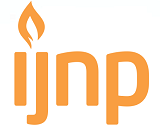Palliative Care Needs in Stroke Patients According to Family Perspectives in Yogyakarta: A Phenomenological Study
DOI:
https://doi.org/10.18196/ijnp.v9i1.22395Keywords:
family perspective, needs, palliative care, stroke patients, qualitativeAbstract
Background: Stroke patients have complex problems that require palliative care to optimize the patient's quality of life. Identifying palliative care needs is the first step in providing palliative care.
Objective: This study aimed to explore the palliative care needs of stroke patients according to family perspectives in Yogyakarta.
Methods: This is a phenomenological approach involving 10 family members providing care for patients with stroke. Participants were obtained through a purposive sampling technique with data from the homecare of Dr. Sardjito Hospital, Yogyakarta. Semi-structured interviews and observations were conducted with each participant until data saturation. Verbatim transcripts of the interviews were analyzed using the Colaizzi method. The reporting of this study was based on the Consolidated Criteria for Reporting Qualitative Research (COREQ) checklist.
Results: Seven themes emerged from the analysis: physical needs, psychological needs, social needs, cognitive needs to cope with dementia, spiritual needs, end-of-life care needs, and homecare service needs for stroke patients.
Conclusion: This finding suggests that health workers should provide comprehensive palliative care by paying attention to the primary needs of stroke patients.
References
Azar, N. S., Radfar, M., & Baghaei, R. (2022). Spiritual Self-care in Stroke Survivors: A Qualitative Study. Journal of Religion and Health, 61(1), 493–506. https://doi.org/10.1007/s10943-020-01030-7
Coelho, A., Parola, V., Sandgren, A., Fernandes, O., Kolcaba, K., & Apóstolo, J. (2018). The Effects of Guided Imagery on Comfort in Palliative Care. Journal of Hospice and Palliative Nursing: JHPN: The Official Journal of the Hospice and Palliative Nurses Association, 20(4), 392–399. https://doi.org/10.1097/NJH.0000000000000460
Cotogni, P., Saini, A., & De Luca, A. (2018). In-Hospital Palliative Care: Should We Need to Reconsider What Role Hospitals Should Have in Patients with End-Stage Disease or Advanced Cancer?. Journal of Clinical Medicine, 7(2), 18-26. https://doi.org/10.3390/jcm7020018
Creutzfeldt, C. J., Abedini, N. C., & Holloway, R. G. (2023). Neuropalliative Care for Stroke Providers. Stroke, 54(11), e485–e487. https://doi.org/10.1161/STROKEAHA.123.040431
Elendu, C., Amaechi, D. C., Elendu, T. C., Ibhiedu, J. O., Egbunu, E. O., Ndam, A. R., Ogala, F., Ologunde, T., Peterson, J. C., Boluwatife, A. I., Okongko, A. O., Fatoye, J. O., Akpovona, O. L., Onyekweli, S. O., Temitope, A. Y., Achimugu, A. O., & Temilade, A. V. (2023). Stroke and cognitive impairment: Understanding the connection and managing symptoms. Annals of Medicine and Surgery, 85(12), 6057–6066. https://doi.org/10.1097/MS9.0000000000001441
ElMokhallalati, Y., Bradley, S. H., Chapman, E., Ziegler, L., Murtagh, F. E., Johnson, M. J., & Bennett, M. I. (2020). Identification of patients with potential palliative care needs: A systematic review of screening tools in primary care. Palliative Medicine, 34(8), 989–1005. https://doi.org/10.1177/0269216320929552
Engel, M., Kars, M. C., Teunissen, S. C. C. M., & Heide, A. van der. (2023). Effective communication in palliative care from the perspectives of patients and relatives: A systematic review. Palliative & Supportive Care, 21(5), 890–913. https://doi.org/10.1017/S1478951523001165
García-Navarro, E. B., Medina-Ortega, A., & García Navarro, S. (2021). Spirituality in Patients at the End of Life—Is It Necessary? A Qualitative Approach to the Protagonists. International Journal of Environmental Research and Public Health, 19(1), 227-239. https://doi.org/10.3390/ijerph19010227
Hofmeister, M., Memedovich, A., Dowsett, L. E., Sevick, L., McCarron, T., Spackman, E., Stafinski, T., Menon, D., Noseworthy, T., & Clement, F. (2018). Palliative care in the home: A scoping review of study quality, primary outcomes, and thematic component analysis. BMC Palliative Care, 17, 41-47. https://doi.org/10.1186/s12904-018-0299-z
Holmes, S. N., & Illing, J. (2021). Breaking bad news: Tackling cultural dilemmas. BMJ Supportive & Palliative Care, 11(2), 128–132. https://doi.org/10.1136/bmjspcare-2020-002700
Kemenkes RI. (2018, December 27). Laporan Nasional Riskesdas 2018. Kementrian Kesehatan RI. Retrieved from https://repository.badankebijakan.kemkes.go.id/
Kendall, M., Cowey, E., Mead, G., Barber, M., McAlpine, C., Stott, D. J., Boyd, K., & Murray, S. A. (2018). Outcomes, experiences and palliative care in major stroke: A multicentre, mixed-method, longitudinal study. CMAJ: Canadian Medical Association Journal = Journal de l’Association Medicale Canadienne, 190(9), 238–246. https://doi.org/10.1503/cmaj.170604
Kristanti, M. S., Effendy, C., Utarini, A., Vernooij-Dassen, M., & Engels, Y. (2019). The experience of family caregivers of patients with cancer in an Asian country: A grounded theory approach. Palliative Medicine, 33(6), 676–684. https://doi.org/10.1177/0269216319833260
Kuriakose, D., & Xiao, Z. (2020). Pathophysiology and Treatment of Stroke: Present Status and Future Perspectives. International Journal of Molecular Sciences, 21(20), 7609-7632. https://doi.org/10.3390/ijms21207609
LeBaron, V. T., Smith, P. T., Quiñones, R., Nibecker, C., Sanders, J. J., Timms, R., Shields, A. E., Balboni, T. A., & Balboni, M. J. (2016). How Community Clergy Provide Spiritual Care: Toward a Conceptual Framework for Clergy End-of-Life Education. Journal of Pain and Symptom Management, 51(4), 673–681. https://doi.org/10.1016/j.jpainsymman.2015.11.016
Lloyd, J., Pinto, A. M., Nair, S., & Tarey, S. (2019). A Qualitative Study on Palliative Needs of Stroke Patients in an Indian Tertiary Care Setting—Doctors’ Perspective. Indian Journal of Palliative Care, 25(1), 84–91. https://doi.org/10.4103/IJPC.IJPC_161_18
Ma, Y., Luo, J., & Wang, X.-Q. (2022). The effect and mechanism of exercise for post-stroke pain. Frontiers in Molecular Neuroscience, 15, 1074205, 1-8. https://doi.org/10.3389/fnmol.2022.1074205
Mahmoud, S., Moughrabi, S. M., & Khasawneh, W. F. (2022). Dying in Isolation: An Islamic Perspective on End-of-Life Care During COVID-19. Journal of Hospice and Palliative Nursing, 24(6), 321–327. https://doi.org/10.1097/NJH.0000000000000905
Manning, M., MacFarlane, A., Hickey, A., Galvin, R., & Franklin, S. (2022). Regulating emotional responses to aphasia to re‐engage in life: A qualitative interview study. International Journal of Language & Communication Disorders, 57(2), 352–365. https://doi.org/10.1111/1460-6984.12702
Mijajlović, M. D., Pavlović, A., Brainin, M., Heiss, W.-D., Quinn, T. J., Ihle-Hansen, H. B., Hermann, D. M., Assayag, E. B., Richard, E., Thiel, A., Kliper, E., Shin, Y.-I., Kim, Y.-H., Choi, S., Jung, S., Lee, Y.-B., Sinanović, O., Levine, D. A., Schlesinger, I., … Bornstein, N. M. (2017). Post-stroke dementia – a comprehensive review. BMC Medicine, 15, 11-22. https://doi.org/10.1186/s12916-017-0779-7
Morone, G., & Pichiorri, F. (2023). Post-Stroke Rehabilitation: Challenges and New Perspectives. Journal of Clinical Medicine, 12(2), 550-552. https://doi.org/10.3390/jcm12020550
Mulhern, M. (2023). Cognitive Rehabilitation Interventions for Post-Stroke Populations. Delaware Journal of Public Health, 9(3), 70–74. https://doi.org/10.32481/djph.2023.08.012
National Aphasia Association. (2023, December 18). Communication Strategies: Some Dos and Don’ts. The National Aphasia Association. Retrieved from https://aphasia.org/aphasia-resources/communication-tips/
Navarro-Meléndez, A., Gimenez, M., Robledo-Donascimento, Y., Río-González, A., & Lendínez-Mesa, A. (2023). Physiotherapy applied to palliative care patients: A descriptive practice-based study. BMC Palliative Care, 22(1), 99-106. https://doi.org/10.1186/s12904-023-01188-3
Pornrattanakavee, P., Srichan, T., Seetalarom, K., Saichaemchan, S., Oer-areemitr, N., & Prasongsook, N. (2022). Impact of interprofessional collaborative practice in palliative care on outcomes for advanced cancer inpatients in a resource-limited setting. BMC Palliative Care, 21(1), 229-237. https://doi.org/10.1186/s12904-022-01121-0
Redondo Elvira, T., Ibáñez Del Prado, C., & Cruzado, J. A. (2023). Psychological well-being in palliative care: A systematic review. Omega, 87(2), 377–400. https://doi.org/10.1177/00302228211019203
Rutkowski, N. A., Lebel, S., Richardson, K., Mutsaers, B., Chasen, M., & Feldstain, A. (2018). A little help from my friends: Social support in palliative rehabilitation. Current Oncology, 25(6), 358–365. https://doi.org/10.3747/co.25.4050
Sabrina, K. D., Venigalla, H., Khan, A. M., Ahmed, R., Mekala, H. M., Zain, H., & Shagufta, S. (2017). Post Stroke Depression Frequently Overlooked, Undiagnosed, Untreated. Neuropsychiatry, 07(06), 906-919. https://doi.org/10.4172/Neuropsychiatry.1000296
Septian, R. B., Pangastuti, H. S., & Nisman, W. A. (2024). The need for home-based palliative care among patients with stroke and their families: A phenomenological study. Journal of Holistic Nursing Science, 11(1). https://doi.org/10.31603/nursing.v11i1.11189
Sharp, C. A., Schulz Moore, J. S., & McLaws, M.-L. (2019). Two-Hourly Repositioning for Prevention of Pressure Ulcers in the Elderly: Patient Safety or Elder Abuse? Journal of Bioethical Inquiry, 16(1), 17–34. https://doi.org/10.1007/s11673-018-9892-3
Star, A., & Boland, J. W. (2018). Updates in palliative care – recent advancements in the pharmacological management of symptoms. Clinical Medicine, 18(1), 11–16. https://doi.org/10.7861/clinmedicine.18-1-11
Stroke Association. (2016, February 21). State of the nation stroke statistics. Retrived from https://www.cdc.gov/stroke/facts.htm
Vos, T., Allen, C., & Arora, M. (2016). Global, regional, and national incidence, prevalence, and years lived with disability for 310 diseases and injuries, 1990-2015: A systematic analysis for the Global Burden of Disease Study 2015. Lancet (London, England), 388(10053), 1545–1602. https://doi.org/10.1016/S0140-6736(16)31678-6
World Health Organization. (2020, December 27). Stroke: A global response is needed. Retrieved from https://www.proquest.com/docview/1818627035
World Stroke Organization. (2022, December 30). World Stroke Organization (WSO)- Global Stroke Fact Sheet 2022. Retrieved from https://www.dropbox.com/s/wm12nosylzkk5ea/World%20Stroke%20Organization%20%28WSO%29-%20Global%20Stroke%20Fact%20Sheet%202022.pdf?dl=0
Downloads
Published
Issue
Section
License
Copyright (c) 2025 IJNP (Indonesian Journal of Nursing Practices)

This work is licensed under a Creative Commons Attribution 4.0 International License.
License
Articles published in the IJNP (Indonesian Journal of Nursing Practices) are licensed under a Attribution 4.0 International (CC BY 4.0) license. You are free to:
- Share — copy and redistribute the material in any medium or format.
- Adapt — remix, transform, and build upon the material for any purpose, even commercially.
This license is acceptable for Free Cultural Works. The licensor cannot revoke these freedoms as long as you follow the license terms. Under the following terms:
Attribution — You must give appropriate credit, provide a link to the license, and indicate if changes were made. You may do so in any reasonable manner, but not in any way that suggests the licensor endorses you or your use.
- No additional restrictions — You may not apply legal terms or technological measures that legally restrict others from doing anything the license permits.
Copyright
Authors who publish with IJNP (Indonesian Journal of Nursing Practices) agree to the following terms:
- Authors retain copyright and grant IJNP (Indonesian Journal of Nursing Practices) the right of first publication with the work simultaneously licensed under an Attribution 4.0 International (CC BY 4.0) that allows others to remix, adapt and build upon the work with an acknowledgment of the work's authorship and of the initial publication in IJNP (Indonesian Journal of Nursing Practices).
- Authors are permitted to copy and redistribute the journal's published version of the work (e.g., post it to an institutional repository or publish it in a book), with an acknowledgment of its initial publication in IJNP (Indonesian Journal of Nursing Practices).














